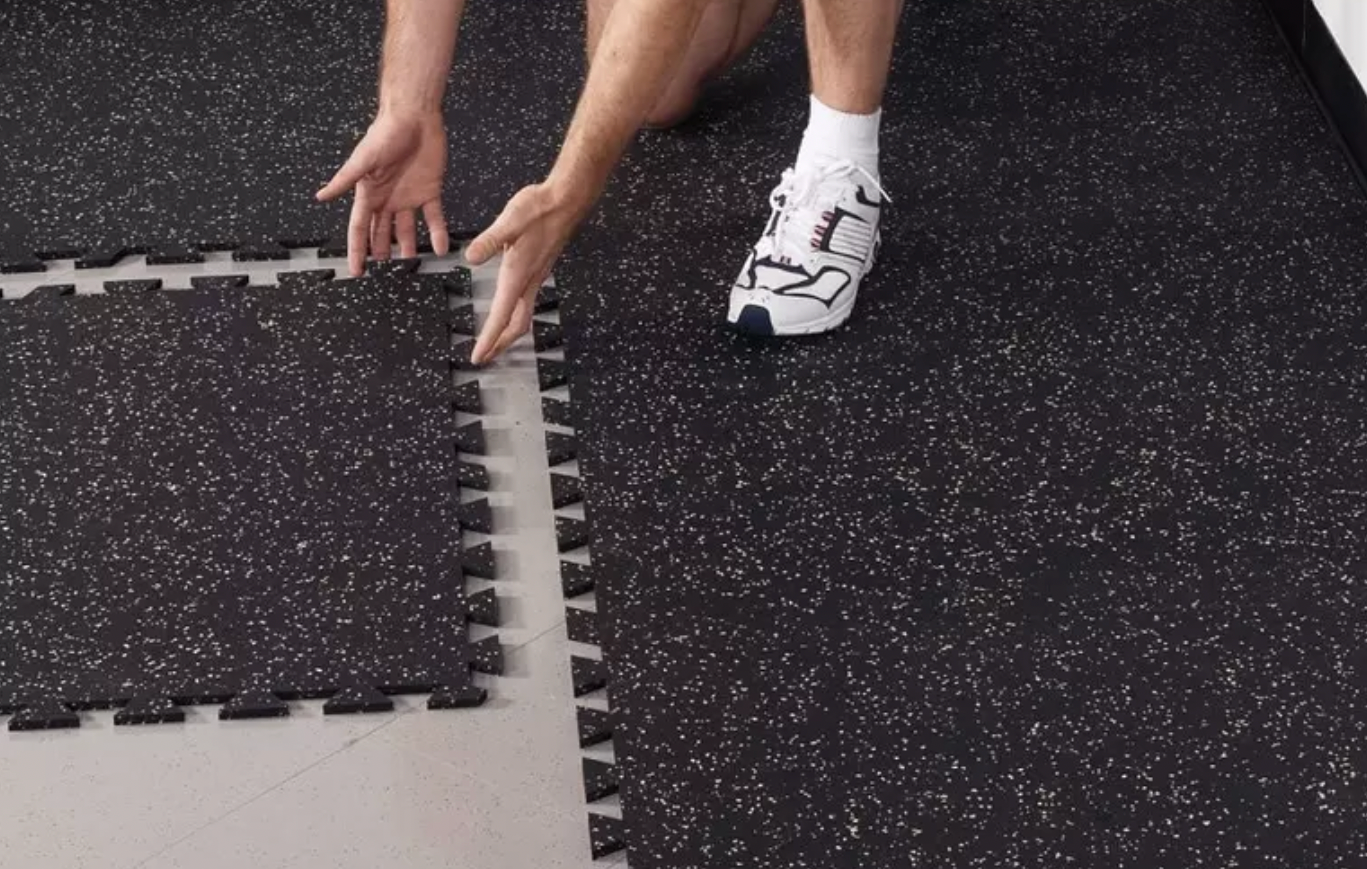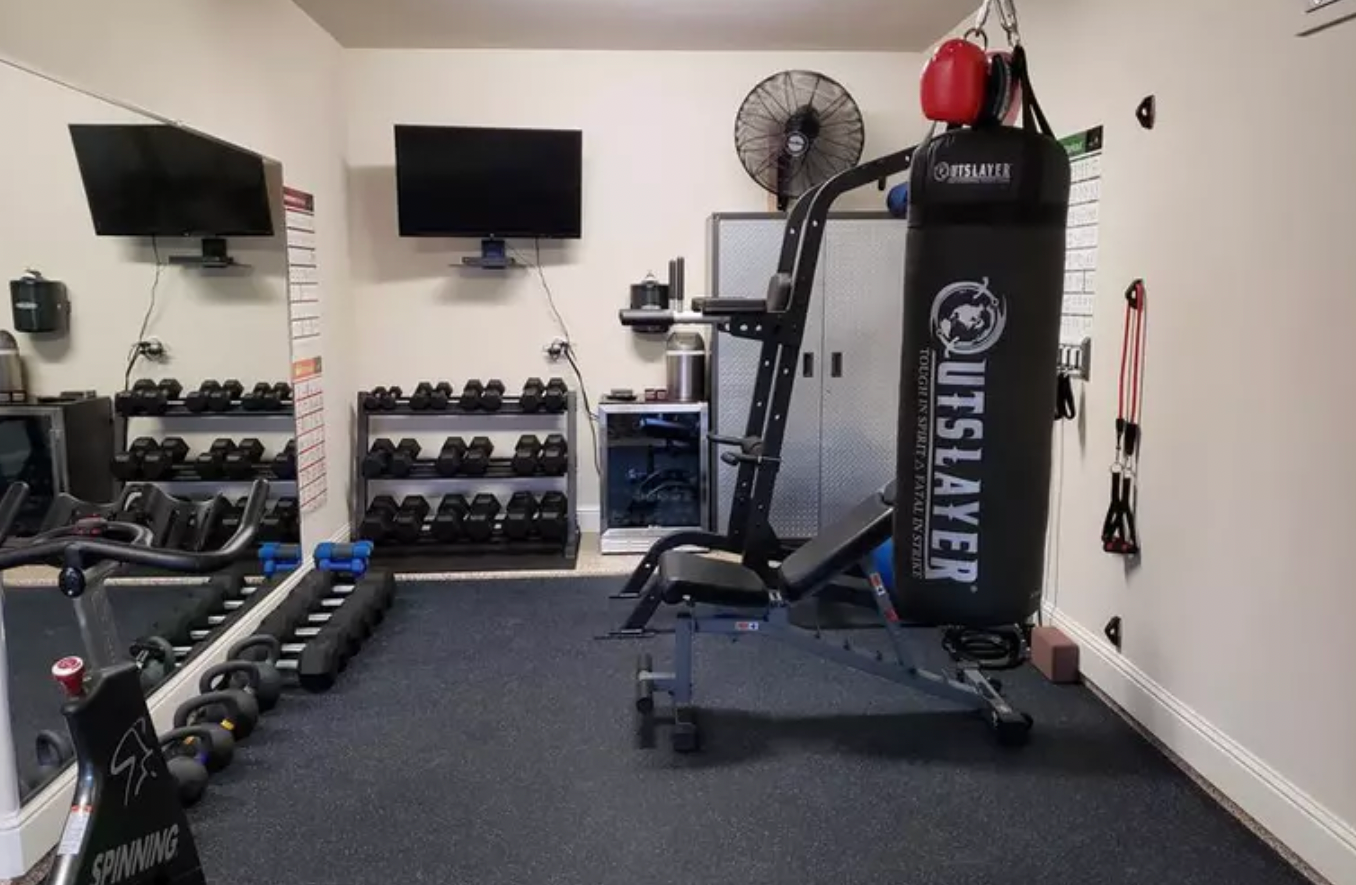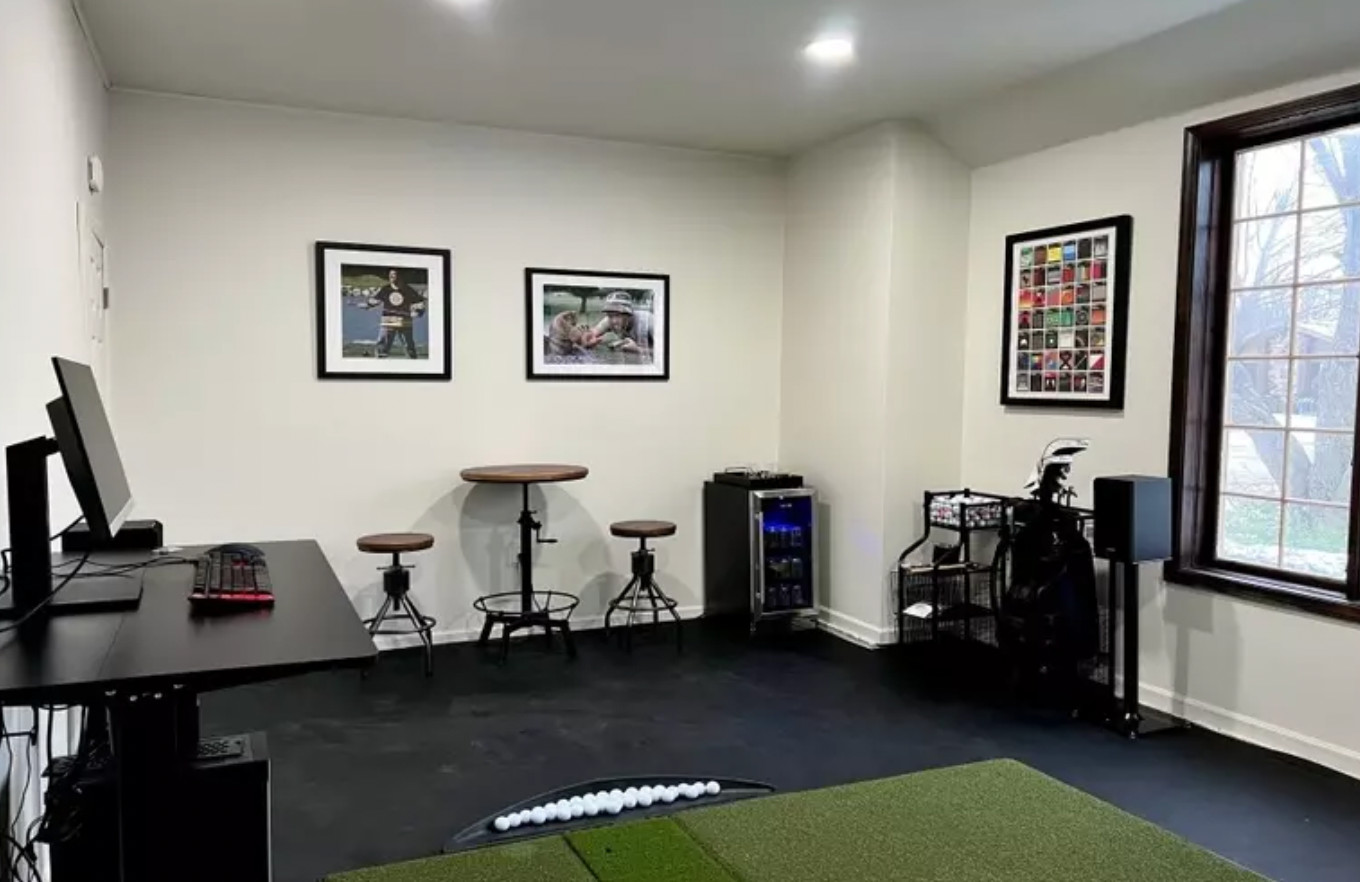
Rubber flooring has become a go-to choice for a variety of spaces, from high-energy gyms and cozy home basements to safe and durable playrooms. Its durability, slip resistance, and versatile designs make it a favorite flooring material for both residential and commercial needs. But when it comes to choosing the right rubber flooring option, the big question is: rubber tiles or rubber rolls?
Both options have unique benefits and drawbacks, and your choice depends on factors like the size of your space, your design preferences, and how the floor will be used. In this article, we'll break down the key differences and help you decide which option—rubber tiles vs. rolls—best suits your needs.
Key Differences Between Rubber Tiles and Rolls


Rubber tiles and rubber rolls may seem similar at first glance, but they differ significantly in design, functionality, and installation. Here's an overview to set the stage:
- Size and Coverage: Rubber tiles are smaller, modular pieces ideal for smaller or irregularly shaped spaces. Rubber rolls, on the other hand, come in large sheets that cover expansive areas with fewer seams, perfect for larger spaces. For more details, refer to our rubber roll size guide.
- Installation Process: Tiles are known for their easy, DIY-friendly installation, often snapping together like interlocking puzzle pieces. Rolls require more effort, as they’re heavier and may need adhesive for secure placement.
- Appearance and Seam Visibility: Tiles have visible seams, which might not suit certain aesthetic preferences, whereas rolls offer a sleek, seamless finish that’s often preferred in professional or commercial spaces.
- Durability and Flexibility: Rolls are generally thicker and more durable, making them a better choice for high-impact zones like gym floors. Tiles, however, are easier to replace, offering flexibility for areas prone to wear and tear.
Understanding these foundational differences will make it easier to weigh the pros and cons of each option.
Rubber Tiles – Pros and Cons


When considering rubber tiles for your flooring, it’s important to weigh the benefits and drawbacks. Rubber tiles are versatile, easy to install, and offer unique customization options, but they may not suit every space or purpose.
Let’s dive into the details to help you decide whether rubber tiles are the right flooring material for your needs.
Pros:
- Easy Installation
Rubber tiles are the DIYer’s dream. Their modular, interlocking design eliminates the need for professional installation, special tools, or adhesives. Simply lay them down, snap them together, and you’re good to go. - Perfect for Irregular Spaces
Because they’re smaller and come in square-foot sections, rubber tiles fit snugly into irregularly shaped rooms like home gyms, garages, or playrooms. You can also create unique patterns by mixing and matching colors or designs. - Customizable and Versatile
Rubber tiles let you get creative with your flooring. Want a checkerboard pattern for your garage flooring or a sleek, uniform surface for your gym mats? Tiles give you endless customization options. - Easily Replaceable
Spills or damage aren’t a problem. Since rubber tiles are modular, you can replace individual tiles without tearing up the whole floor.
Cons:
- Visible Seams
One drawback of rubber tiles is their seams, which may disrupt the look of a smooth, cohesive floor. This might be less appealing in professional settings where aesthetics are a priority. - Not Ideal for Heavy-Duty Areas
Rubber tiles are durable, but they’re not as thick or robust as rolls. They may not hold up as well in high-impact areas like weightlifting zones or spaces with heavy machinery.
Rubber Rolls – Pros and Cons


If you’re looking to cover a large space or need a durable option for high-traffic areas, rubber rolls might be the perfect solution. While they provide a seamless look and unmatched durability, they also come with a few installation challenges.
Here’s a closer look at the pros and cons of rubber rolls to help you determine if they’re the right choice for your project.
Pros:
- Seamless Appearance
Rubber rolls offer a sleek, professional look, making them ideal for large, high-traffic areas like commercial gyms, fitness centers, or expansive basements. The lack of visible seams enhances both functionality and aesthetics. - Exceptional Durability
Rubber rolls are designed for heavy-duty use. With thicker material and fewer seams, they can handle high-impact activities and heavy equipment better than tiles. This makes them a go-to choice for rubber gym flooring or commercial spaces. - Cost-Effective for Large Spaces
Rolls are more economical when covering a large area. They cover more ground per roll, reducing material costs and simplifying the installation process.
Cons:
- Challenging Installation
Due to their weight and size, installing rubber rolls can be a two-person job. They often require adhesives or double-sided tape for secure placement, which adds to the installation complexity. - Less Flexible for Small Spaces
Rubber rolls are better suited for open, larger spaces. In smaller or irregularly shaped areas, they can be harder to fit and require cutting, which might not be DIY-friendly.
Choosing the Right Option Based on Your Space


Your specific space will determine whether rubber tiles or rolls are the best fit. Here’s how to decide:
Smaller or Irregular Spaces
Rubber tiles are ideal for compact or irregularly shaped rooms like home gyms, offices, or playrooms. Their modular design makes them easy to install in tight spaces and around obstacles without professional help. Tiles also offer creative flexibility, allowing you to mix colors or patterns for a custom look. Plus, if damage occurs, individual tiles can be replaced without hassle, making them perfect for high-use areas.
Large or High-Traffic Areas
Rubber rolls are the best option for expansive areas like commercial gyms, fitness studios, or large basements. Their seamless design creates a clean, professional appearance while reducing dirt accumulation. Rolls are also highly durable and can withstand heavy equipment and high-impact activities. For larger spaces, they’re more cost-effective and provide long-term performance with fewer maintenance needs.
By evaluating the layout and use of your space, you can easily decide whether the flexibility of tiles or the durability of rolls is the right flooring solution for you.
Installation and Maintenance Comparison


When it comes to installation, the difference between rubber tiles and rubber rolls can make or break your decision:
1. Rubber Tiles
Rubber tiles are designed for simplicity, making them a favorite among DIY enthusiasts. Their interlocking edges or adhesive backing allow for a hassle-free installation process that doesn’t require special tools or adhesives.
For most setups, it’s as easy as laying them down and snapping them together. If you happen to make a mistake during installation, you can quickly reposition or replace individual tiles without having to redo the entire floor, offering great flexibility.
2. Rubber Rolls
Rubber rolls, on the other hand, present a more complex setup process. Their large size and significant weight often require at least two people for installation, and in some cases, professional assistance might be necessary.
To ensure a secure placement, rubber rolls typically require adhesives or double-sided tape, which can increase the time and effort needed. If you’re unsure about the process, be sure to explore our comprehensive guide on how to install rubber flooring rolls to simplify the task.
Maintenance Requirements
1. Rubber Tiles
Rubber tiles are modular in design, which means they feature visible seams that can sometimes collect dirt or debris. However, this same rubber tile design makes cleaning and maintenance simple. If needed, individual tiles can be removed for a thorough deep cleaning or replaced entirely without disrupting the rest of the floor.
Additionally, this ease of repair ensures that maintaining your flooring is quick and efficient, ideal for spaces where flexibility and convenience are priorities.
2. Rubber Rolls
Rubber rolls have fewer seams compared to tiles, which significantly reduces the risk of dirt or debris accumulating. This seamless quality makes them an excellent low-maintenance choice for high-traffic areas where regular cleaning might be challenging.
Furthermore, rubber rolls are known for their durability. They withstand wear and tear exceptionally well over time. This results in less frequent maintenance or replacement needs, which is particularly beneficial for commercial or high-impact environments.
Cost Considerations


Cost is often a key factor when choosing between rubber floor tiles and rubber rolls, as each option offers distinct advantages depending on your budget and project size. Here’s how the two compare:
Price Per Square Foot
Rubber tiles generally have a higher price per square foot due to their modular design and versatility. While this upfront cost can be significant, it reflects the added benefits of easy installation and replaceability. On the other hand, rubber rolls are more cost-effective for larger spaces, as they cover more area per roll, reducing the overall material expense.
Installation Costs
Rubber tiles are DIY-friendly, allowing you to save on labor costs since they don’t require professional installation or adhesives. In contrast, rubber rolls, while cheaper per square foot, may require professional installation or adhesive materials, which can increase the overall expense. This added cost may be justified in large, high-traffic spaces where durability and seamless appearance are priorities for rubber floors.
Long-Term Value
Tiles offer excellent flexibility for smaller projects or spaces prone to wear and tear, as damaged tiles can be replaced individually. However, rolls provide better durability for expansive or high-impact areas, offering long-term performance that minimizes maintenance or replacement costs over time.
Making the Right Choice for Your Needs
At the end of the day, the decision between rubber tiles vs. rolls comes down to your space, your budget, and your specific flooring needs. Both options have their strengths, but whether you go with rubber floor tiles or rubber rolls, Flooring Inc. has you covered with high-quality materials and expert guidance.
Explore our collection of rubber flooring rolls and rubber tiles to discover the perfect match for your space. Whether you need a durable rubber floor roll for larger spaces or versatile interlocking rubber tiles for smaller areas, we’re here to help. Visit Flooring Inc. today and take the first step toward creating a space you’ll love!


